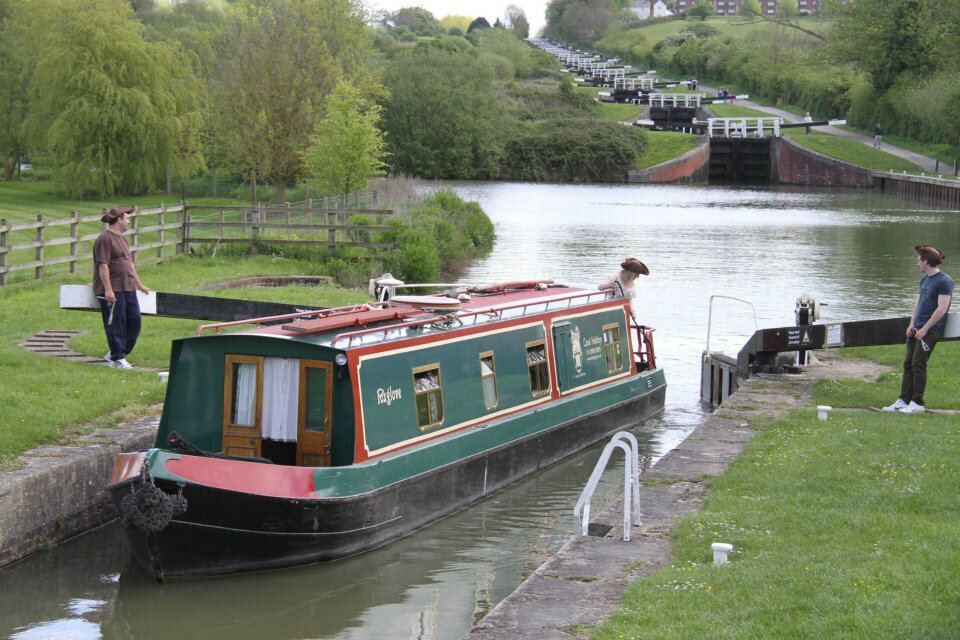Narrowboat terms you need to know
When it comes to narrowboats and narrowboat holidays, there are lots of words and terms used to describe the parts of the boat and the equipment needed to navigate the canals. Many of them derive from the old working boatmen’s terms and are quite idiosyncratic.
To help those who are new to narrowboating, Drifters’ has put together a list of 20 of the most commonly used narrowboat terms:
- The tiller – is used to steer the boat (steer left to go right, and right to go left!)
- Throttle – is the accelerator (pushed forward to go forward) and brake (achieved by putting the boat into reverse)
- Bow – the front of the boat
- Stern – the back of the boat (also known as aft)
- Port – the left of the boat
- Starboard – the right of the boat
- Beam – width of the boat, 7ft in the case of a narrowboat, 14ft for a widebeam boat
- Weed hatch – a watertight compartment with a removable lid in the stern of the boat providing access to remove weeds or other items wound around the propeller – only after you’ve switched the engine off
- Galley – the boat’s kitchen area
- Saloon – the living area on the boat
- Bilge pump – pump for removing water that has collected in the bilges (space inside a boat’s hull beneath the cabin floor)
- Winding hole – is a widened section of canal where you can turn your boat around
- Paddle – the door in a lock gate which can be opened or closed to allow water in or out of a lock. The paddle is operated by winding the paddle gear up to open the paddle or down to close it
- Windlass – L-shaped handle used to open and close lock paddles. Remember to keep a firm grip on the windlass and never leave it unattended on the paddle gear
- Cill – bar of masonry against which the bottom of the lock gates rest when closed. Cills stick out by about 1.5m and you can only see them as the lock empties. Most locks have markers to show you the approximate position of the cill. Be careful to stay back from the cill to avoid getting ‘hung up’ on it
- Balance beam – Wooden or metal beam projecting from a lock gate (or lift bridge), to counterbalance the weight of the gate (or bridge) and allow leverage for opening and closing it
- Gongoozlers – bystanders who watch boats go through the locks
- Mooring – a place to park your boat. Always moor to the towpath if you can and use signposted visitor moorings where possible. Don’t moor on lock, bridge or tunnel approaches, near weirs, sharp bends, blind spots, opposite turning points, at junctions or near angling spots
- Aqueduct – bridge carrying a waterway over a road, river or valley
- Bridge hole – narrow water channel beneath a canal bridge



